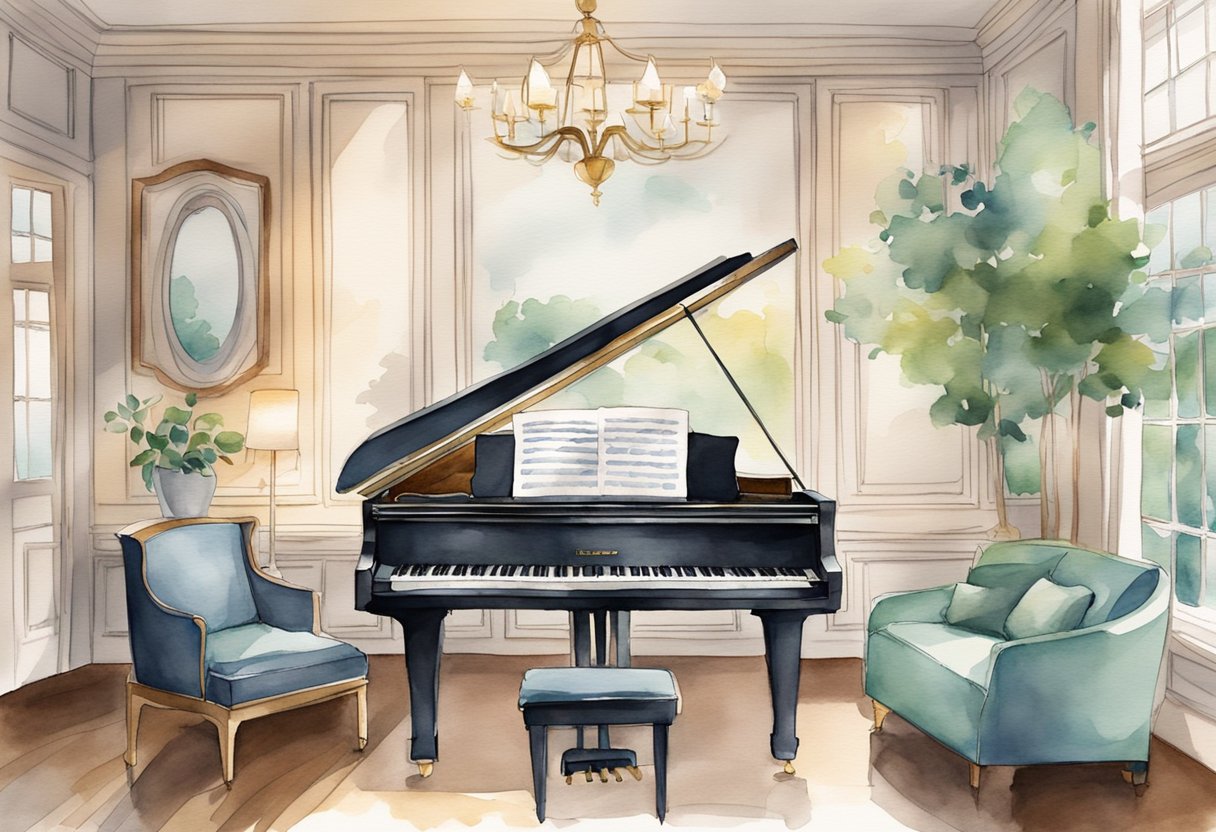As an Amazon Associate I earn from qualifying purchases.
Digital pianos have made significant strides in emulating the feel of real pianos, yet there remains a subtle but noticeable difference. For instance, when you press the keys of a high-quality digital piano, you’ll find that manufacturers have gone to great lengths to replicate the weight and resistance you’d feel on an acoustic piano, often using weighted or graded hammer action mechanisms.
However, the actual sensation of a hammer striking the strings and the resultant vibrations on an acoustic piano can lead a discerning pianist to recognize the difference.
Want to Learn Piano?Click Here

As a music teacher, I’ve watched many students transition between digital and acoustic pianos. They often remark on how close the feel can be on high-end digital models, such as those equipped with textured keys and detailed action. Yet, the physical presence and the resonant soundboard of an acoustic piano offer a tactile experience that digital pianos approximate but do not duplicate. This isn’t to say digital pianos don’t have their advantages, such as volume control and headphone options, which are immensely beneficial for practice in shared spaces.
As a pianist myself, I recall the first time I laid hands on a digital piano and was impressed by how far technology had come. You could perform delicate pianissimos and resounding fortissimos, just as on an acoustic piano. Despite this, after decades of playing, there’s an organic connection you feel when the wooden keys of an acoustic piano respond to your touch, connecting you directly with centuries of musical heritage. Whether you’re a beginner or an enthusiast, understanding these nuances is crucial to choosing the right instrument for your musical journey.

Characteristics of Digital Pianos
When you’re exploring digital pianos, your experience will largely depend on key features like touch response, sound quality, and design elements that offer a balance between traditional playability and modern convenience.
Key Action and Touch
The key action of a digital piano is designed to mimic the responsive touch of an acoustic piano. With weighted keys, you feel resistance similar to that of a real piano, thanks to graded hammer or counterbalanced mechanics.
Manufacturers like Yamaha Clavinova and Dexibell invest in advanced technology to ensure the touch is as close to an acoustic piano as possible. This includes textured keys, spacing and much more.
Sound Quality and Samples
Remarkable digital pianos utilize high-quality samples from grand pianos to deliver rich and authentic sounds. The sound engine might offer various layers of polyphony to ensure depth and complexity—some, like Dexibell’s VIVO S7 Pro, boast unlimited polyphony.
Built-in speakers work in harmony to project this sound, but for private practice, a headphones jack is indispensable. Remember, the volume can be controlled, which is perfect if you live in an apartment or practice late at night.
Design and Portability
Digital pianos often dazzle with sleek designs available in a variety of finishes and materials. They are crafted to fit into modern living spaces more easily than acoustic pianos, and their lightweight builds make them portable for gigging musicians or those with limited space.
Many digital models include features like a sustain pedal and the ability to connect to computers or other devices, expanding your musical capabilities.
Comparing Digital and Acoustic Pianos
When considering a digital piano versus an acoustic piano, factors like touch response, sound quality, and maintenance come into play. Let’s examine the differences now.
Physical Differences
Acoustic pianos, whether a grand or an upright, are crafted with strings and a soundboard, producing rich, resonant tones through physical vibration.
Weighted hammer action in the keys replicates the touch of a traditional piano, where the weight of the hammers is felt when pressing the keys.
Digital pianos, although designed to simulate this feel, use electronic sensors and speakers to emulate sound. The presence of sustain pedals, sostenuto pedals, and soft pedals on most acoustic pianos allows for nuanced expression that digital pianos recreate through digital sampling.
Maintenance and Tuning
An acoustic piano requires regular tuning and occasional repairs to maintain its sound quality, as environmental factors can affect string tension.
On the other hand, a digital piano demands minimal maintenance, staying in tune without the influence of humidity or temperature. While an acoustic piano might exude authenticity, its digital counterpart offers convenience, especially for beginners apprehensive about ongoing maintenance costs.
That can easily save you a couple hundred bucks per year!
Cost Considerations
Initially, you might find digital pianos to be less expensive than their acoustic counterparts. However, pricing varies widely, and high-end digital pianos with advanced features can approach the investment level of an upright piano.
When evaluating cost, factor in long-term expenses—such as tuning for acoustics and potential electronic updates or replacements for digitals. Money spent on a quality instrument, whether digital or acoustic, often correlates with a more realistic piano feel and overall playing satisfaction.
Hello & thanks for stopping by! I’m a professional concert pianist and piano instructor. In the United States, I’ve given successful performances in several places including New York, Florida, Connecticut, & New Jersey, I have also performed internationally in Italy and made my Carnegie Hall debut in 2014. I enjoy blogging about the piano, the art of performance, general music, current events and the latest in music production.
